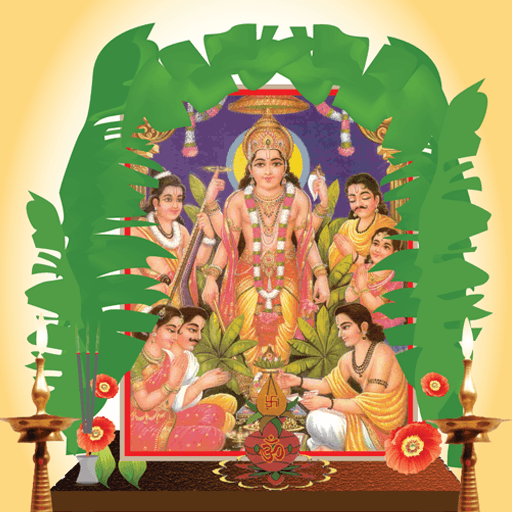
The Significance of Satyanarayan Katha: Benefits & How to Perform
Introduction to Satyanarayan Katha: A Path to Truth and Prosperity
The Satyanarayan Katha stands as one of the most revered and frequently performed Hindu pujas across various communities. This devotional observance is exclusively dedicated to Lord Vishnu, specifically in his benevolent manifestation as Lord Satyanarayan, who embodies the supreme truth itself. Performing this sacred ritual is believed to bestow boundless blessings, inner peace, abundant prosperity, and the fulfillment of heartfelt desires upon the devotee.
Delving into the Spiritual Significance
The very name "Satyanarayan" is a composite of "Satya," meaning truth, and "Narayan," which refers to Lord Vishnu, the ultimate preserver of the universe. Consequently, Lord Satyanarayan is revered as the embodiment of the highest truth. The "Katha" (story) associated with this puja beautifully narrates several incidents that profoundly underscore the cardinal virtues of truthfulness, unwavering devotion, and profound gratitude towards the divine.
It is widely held that engaging in this puja can significantly help an individual to:
- Overcome Obstacles: Effectively remove life's impediments, difficulties, and challenges, paving the way for smoother progress.
- Achieve Prosperity: Invite wealth, material success, and spiritual abundance into one's life.
- Fostering Harmony: Cultivate a serene atmosphere, bringing peace, happiness, and mutual understanding within the family.
- Fulfill Desires: Aid in the successful realization of both material aspirations and spiritual quests.
- Seek Forgiveness: Provide a means to atone for past wrongdoings, sins, or unintentional mistakes, promoting inner cleansing.
Auspicious Timings for Performing Satyanarayan Katha
This versatile puja can be performed on any auspicious day deemed suitable by the devotee. However, it holds particular significance and is considered exceptionally beneficial on Purnima (full moon day), Sankranti (solar ingress into a new zodiac sign), or during the observance of specific vows. Many Hindu families traditionally perform this puja prior to embarking on significant life events such as housewarming ceremonies (Griha Pravesh), weddings, or the initiation of a new business venture or project.
A Concise Guide: How to Perform the Puja
While it is always strongly recommended to perform this elaborate puja under the expert guidance of a knowledgeable priest, such as Pandit Ji, here is a brief and simplified overview of the essential steps involved:
-
Meticulous Preparation:
- Thoroughly cleanse and purify the designated puja area.
- Place a revered idol or a sacred image of Lord Satyanarayan at the central point.
- Carefully gather all necessary puja items: fragrant incense sticks, a traditional oil lamp (
diya), fresh flowers, an assortment of seasonal fruits, sacred sweets (with particular emphasis on the special 'Prasad' prepared from wheat flour, sugar, clarified butterghee, and milk), fresh betel leaves, whole coconuts, akalash(a pot filled with water), unboiled rice grains, turmeric powder, vermilion powder (kumkum), and a small offering of money (dakshina). - Arrange five small, symbolic heaps of rice grains on the altar.
-
Sankalpa (Solemn Vow):
- The devotee, with utmost sincerity, takes a solemn vow (
Sankalpa) to perform the puja with unwavering devotion, clearly stating their specific intention or purpose behind the performance of this sacred ritual.
- The devotee, with utmost sincerity, takes a solemn vow (
-
Invocation and Worship of Deities:
- The ceremony commences with the initial worship of Lord Ganesha, the remover of all obstacles, to ensure a smooth conduct of the puja.
- Following this, Lord Satyanarayan and other revered deities are formally invoked with appropriate mantras.
-
Recitation of the Katha (Sacred Stories):
- The priest (or the devotee, if performing independently) meticulously recites the five distinct chapters of the Satyanarayan Katha. These chapters narrate inspiring stories of various individuals who either devoutly performed or regrettably neglected the puja, and the subsequent profound experiences and consequences they encountered.
-
Aarti (Waving of Lamps):
- The puja culminates with the heartfelt performance of
Aarti, wherein prayers are offered to the deities with a beautifully lit lamp, symbolizing the removal of darkness and the presence of divine light.
- The puja culminates with the heartfelt performance of
-
Prasad Distribution:
- The specially prepared
Prasadis first reverently offered to the deity, after which it is lovingly distributed among all family members and esteemed guests, symbolizing shared blessings.
- The specially prepared
Conclusion: Embracing the Truth
The Satyanarayan Katha transcends the definition of a mere ritual; it is a profound spiritual journey that powerfully reinforces faith, consistently promotes truthfulness in all aspects of life, and wholeheartedly invites divine blessings into one's existence. By understanding its deep significance and performing it with genuine devotion and a pure heart, devotees are poised to experience truly profound and transformative positive changes in their lives.